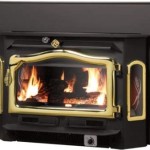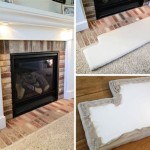Gas Fireplace Valve Key Operation: A Comprehensive Guide
Gas fireplaces offer a convenient and aesthetically pleasing alternative to traditional wood-burning fireplaces. A core component of safe and efficient gas fireplace operation is the valve key, a simple yet vital tool used to control the gas flow and ignite the flames. Understanding the function, operation, and safety aspects of the valve key is paramount for any gas fireplace owner.
This article aims to provide a comprehensive guide to gas fireplace valve key operation, covering its purpose, proper usage, troubleshooting common issues, and emphasizing safety precautions. The information presented is intended to empower users with the knowledge necessary to operate their gas fireplaces confidently and responsibly.
Understanding the Purpose of the Gas Fireplace Valve Key
The primary function of the gas fireplace valve key is to regulate the gas supply to the burner. It acts as a physical control mechanism, preventing unauthorized or accidental gas flow. The valve itself is typically located near the fireplace, often concealed within a wall box or behind a decorative panel. The valve key, usually a simple metal rod with a shaped end, inserts into the valve stem, allowing the user to turn the gas on and off.
The design of the valve key system provides a significant safety benefit. By requiring a physical key to activate the gas flow, it prevents children or pets from unintentionally turning on the fireplace. This feature is particularly important in households with young children. Furthermore, the key can be removed and stored in a secure location, providing an additional layer of security against unauthorized use.
Beyond safety, the valve key also allows for precise control over the gas supply. Users can completely shut off the gas flow when the fireplace is not in use, preventing gas leaks and conserving energy. This is especially crucial for seasonal homes or instances where the fireplace is infrequently used.
In essence, the gas fireplace valve key is a critical safety device and control mechanism that ensures responsible and efficient operation of the gas fireplace. It is a fundamental component that requires proper understanding and usage to fully enjoy the benefits of a gas fireplace.
Step-by-Step Guide to Operating a Gas Fireplace with a Valve Key
Operating a gas fireplace with a valve key is a straightforward process, but it requires careful attention to detail and adherence to safety guidelines. The following steps outline the proper procedure:
- Locate the Gas Valve and Key: The gas valve is usually situated near the fireplace, often hidden behind a small access panel or within a wall box. The valve key is a separate tool that inserts into the valve stem. Ensure both are readily accessible.
- Prepare the Fireplace: Before initiating the gas flow, ensure the fireplace is clear of any obstructions, such as debris or flammable materials. Open the fireplace damper, if applicable, to allow for proper ventilation.
- Insert the Valve Key: Carefully insert the shaped end of the valve key into the valve stem. It should fit snugly and allow for smooth rotation.
- Turn the Gas On: Gently turn the valve key counterclockwise. The direction may be indicated by an arrow or the words "ON" and "OFF" near the valve. Listen carefully for the sound of gas flowing into the burner. Do not force the key if it feels stuck.
- Light the Pilot Light: Most gas fireplaces have a pilot light that needs to be ignited before the main burner can be activated. Locate the pilot light assembly, which usually has a small button or knob labeled "PILOT." Depress the button (if applicable) and use a long-stemmed lighter or match to ignite the pilot light. Hold the button down for the recommended time (typically 20-30 seconds) to allow the thermocouple to heat up and keep the pilot light lit. Once the pilot light remains lit without holding the button, release it.
- Ignite the Main Burner: After the pilot light is lit, turn the valve key further counterclockwise to increase the gas flow to the main burner. The burner should ignite automatically from the pilot light. If it doesn't, consult the fireplace's owner manual or a qualified technician.
- Adjust the Flame Height: Once the main burner is lit, the valve key can be used to adjust the flame height. Turning the key further counterclockwise increases the gas flow and the flame size. Turning it clockwise reduces the flame size.
- Turning Off the Fireplace: To extinguish the flames, turn the valve key clockwise until it reaches the "OFF" position. This will shut off the gas supply to both the main burner and the pilot light. If the pilot light is intended to remain lit, only turn the key far enough to shut off the main burner.
- Store the Valve Key: After turning off the fireplace, remove the valve key and store it in a safe and secure location, out of reach of children and unauthorized users.
By following these steps carefully, users can safely and effectively operate their gas fireplaces using the valve key. It is crucial to always prioritize safety and consult the manufacturer's instructions for specific guidance related to the fireplace model.
Troubleshooting Common Issues and Safety Precautions
While gas fireplace valve key operation is generally straightforward, certain issues can arise. Recognizing these problems and understanding the appropriate safety precautions is essential for responsible ownership.
One common issue is difficulty turning the valve key. This may indicate a stiff valve or a misaligned key. Avoid forcing the key, as this could damage the valve or break the key. Try lubricating the valve stem with a silicone-based lubricant. If the problem persists, consult a qualified technician.
Another issue is a gas smell when the fireplace is not in use. This could indicate a gas leak. Immediately turn off the gas supply at the main valve, open windows and doors to ventilate the area, and contact the gas company or a qualified technician to inspect the system. Do not attempt to locate the leak yourself using a flame or any other ignition source.
Difficulty lighting the pilot light can also occur. This could be due to a clogged pilot light orifice, a faulty thermocouple, or insufficient gas supply. Consult the owner's manual for troubleshooting steps. If the pilot light continues to fail, contact a qualified technician.
Moreover, it is imperative to have the gas fireplace and its components inspected and serviced annually by a qualified technician. This ensures that the system is functioning safely and efficiently. The technician can identify and address any potential problems before they escalate into serious hazards.
In addition to these troubleshooting tips, always adhere to the following safety precautions:
- Never leave a gas fireplace unattended while it is in operation.
- Keep flammable materials away from the fireplace.
- Ensure the fireplace damper is open when the fireplace is in use.
- Install and maintain carbon monoxide detectors in the home.
- Do not attempt to repair or modify the gas fireplace yourself unless you are a qualified technician.
- Consult the owner's manual for specific safety recommendations.
By diligently following these safety precautions and addressing any issues promptly, users can enjoy the warmth and ambiance of their gas fireplaces safely and responsibly. Proper maintenance and vigilance are key to preventing accidents and ensuring the longevity of the system.
Furthermore, understanding local regulations and building codes related to gas fireplaces is crucial. These regulations may specify requirements for installation, ventilation, and maintenance. Compliance with these codes ensures that the fireplace operates safely and meets the required standards.
In conclusion, the gas fireplace valve key is an integral component that demands careful handling and a thorough understanding of its function. Its proper operation, coupled with adherence to safety guidelines and regular maintenance, guarantees a secure and enjoyable experience with gas fireplaces.

Gas Key Valve Operation For Fire Pit And Log Sets Midwest Hearth

Gas Key Valve Kit 3 4 Npt Chrome Midwest Hearth

Dante Universal Log Lighter With Straight Ball Valve Key And Floor Plate

Blue Flame 18 In Universal Gas Valve Key Polished Chrome Nky The Home Depot

Warming Trends Kv34 Straight Gas Fire Pit Shut Off Valve Kit 3 4 Inch

Long Valve Key 9 Woodland Direct

Blue Flame 0 5 In 3 Step Multifunctional Straight Valve Antique Brass Gas Key Com

How To Light A Gas Fireplace The Home Depot

Fireplace Key Gas Angle Valve Kit Pf 952 Nic By Hearth Master Brushed Nickel

Pro Flex Hearth Master Valve Kit Angle Black Finish Key And In The Gas Fireplace Log Accessories Department At Com
Related Posts








